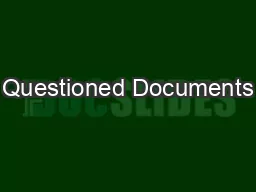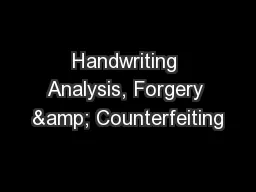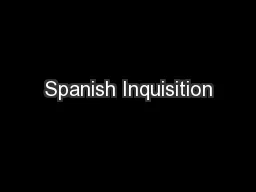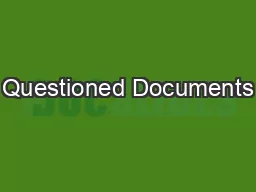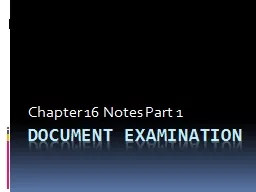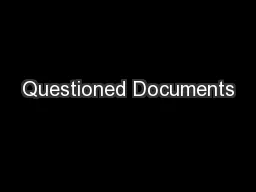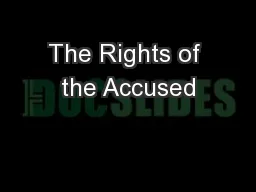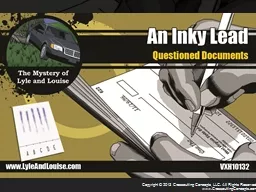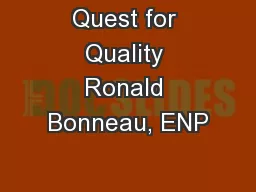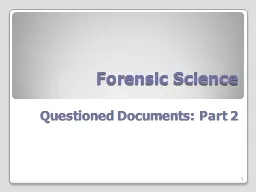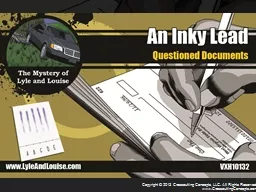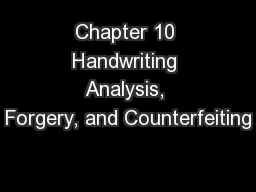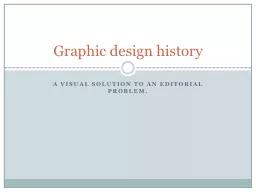PPT-Questioned Documents
Author : test | Published Date : 2016-06-26
Forensic Science Questioned Document Any document about which some issue has been raised or that is the subject of an investigation 2 Document Examiners Mostly
Presentation Embed Code
Download Presentation
Download Presentation The PPT/PDF document "Questioned Documents" is the property of its rightful owner. Permission is granted to download and print the materials on this website for personal, non-commercial use only, and to display it on your personal computer provided you do not modify the materials and that you retain all copyright notices contained in the materials. By downloading content from our website, you accept the terms of this agreement.
Questioned Documents: Transcript
Download Rules Of Document
"Questioned Documents"The content belongs to its owner. You may download and print it for personal use, without modification, and keep all copyright notices. By downloading, you agree to these terms.
Related Documents

